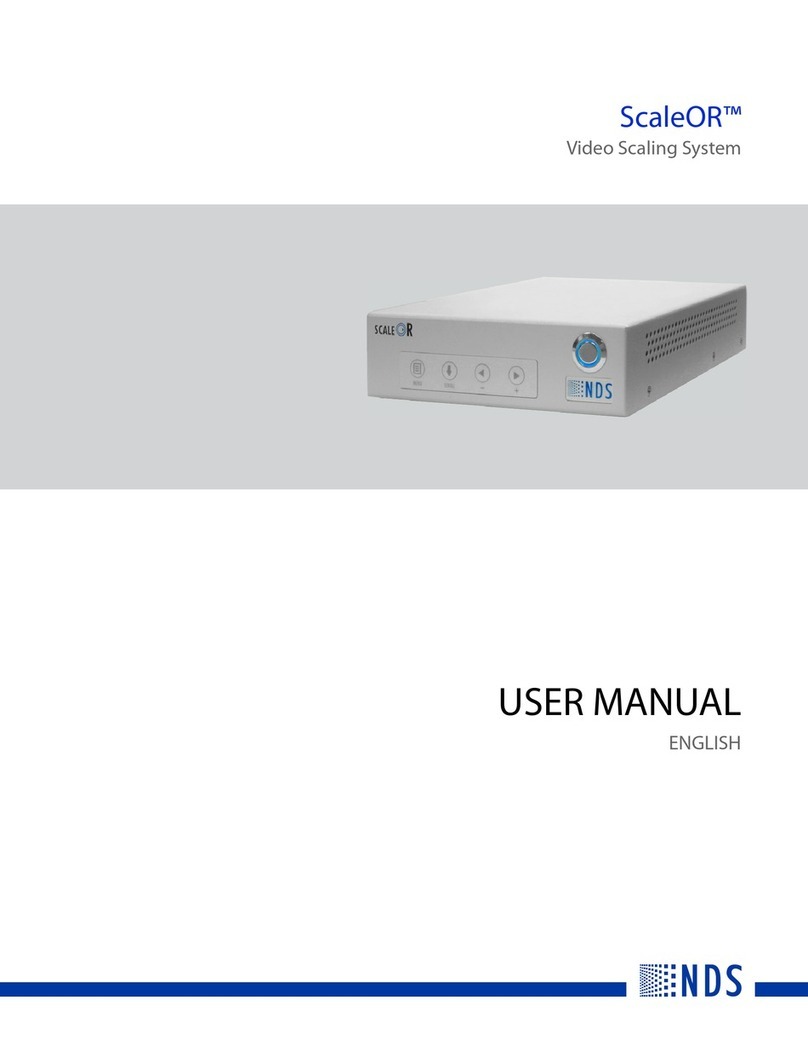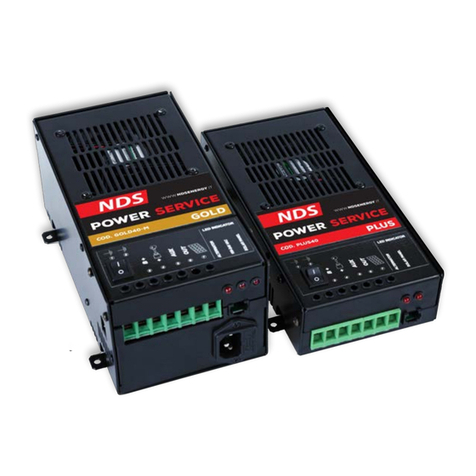1. INTRODUCTION:
Smart-in is the new range of inverters designed and developed by NDS, which has
managed to create a series of professional products that reflect their own customers
expectations. hese Inverters have been designed to guarantee the best performance
in terms of safety, efficiency and reliability.
hanks to some special technical and innovative solutions Smart-in inverters are also
suitable for professional use.
Smart-inverters convert the direct current into the alternating current network in the
Modified Sine Wave (Smart-in SM) or Pure Sine Wave (Smart-in SP). his allows the
use of all the standard utilities for the mains (220V) with an accumulator 12V or 24V,
according to the version.
wo product lines are introduced as follows:
- Smart-in SM with Modified Sine Wave output, black and gray.
- Smart in-SP with Pure Sine Wave output, red and gray.
MAIN FEATURES:
✔High efficiency up to 90% and low self-consumption
✔Input with professional connectors
✔Predisposition for remote control ON/OFF
✔he input and output are completely isolated for a greater safety
✔High stability on the entire input voltage range (10V - 15.5V for the 12V
version 20V - 31V for the 24V version)
✔Ultra Low Noise operation with temperature controlled fan speed
he high efficency has been achieved thanks to an innovative circuit solution and by
using professional input connectors that prevent power loss on the main power path.
Input and output circuits are completely isolated by internal transformers, given to the
products a great level of safety.
he innovative circuit solutions adopted inside the Smart-in inverters allow to have a
great efficiency and operational stability over the entire operating input voltage range
with a low self-consumption.
Load and temperature controlled fan cooler, give an ultra low noise operation to the
inverter, that with a small load can work without fan, and also at bigger loads
conditions, the fan speed is controlled by the internal temperature of the inverter so it
can work in the condition as quite as possible. he speed of the fan cooler is
controlled by the entity of the load connected and by the temperature reached by the
device, giving to the inverter the possibility to work in ultra silent mode with utilities
of small entity and instead, with large utilities, to always work with a noise level as
low as possible.
3





























